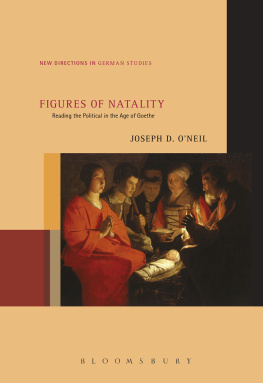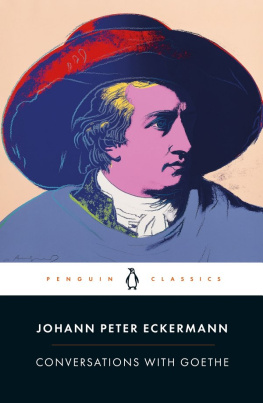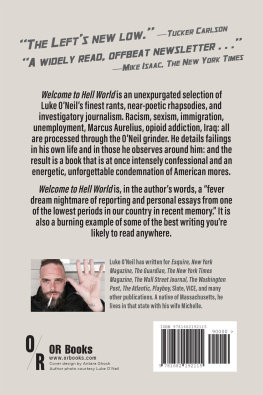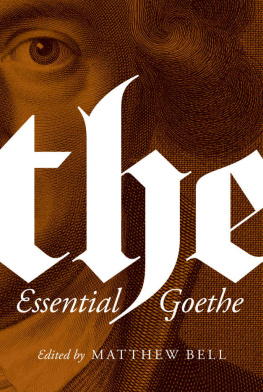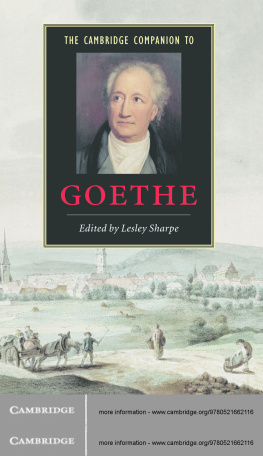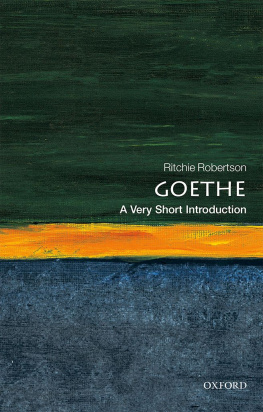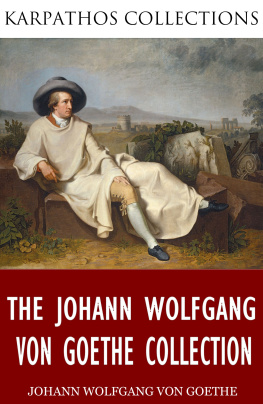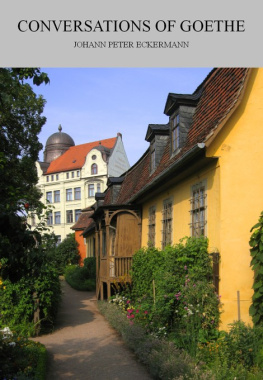ONeil - FIGURES OF NATALITY: reading the political in the age of goethe
Here you can read online ONeil - FIGURES OF NATALITY: reading the political in the age of goethe full text of the book (entire story) in english for free. Download pdf and epub, get meaning, cover and reviews about this ebook. City: Germany;Place of publication not identified, year: 2018;2017, publisher: Bloomsbury Academic Usa, genre: Politics. Description of the work, (preface) as well as reviews are available. Best literature library LitArk.com created for fans of good reading and offers a wide selection of genres:
Romance novel
Science fiction
Adventure
Detective
Science
History
Home and family
Prose
Art
Politics
Computer
Non-fiction
Religion
Business
Children
Humor
Choose a favorite category and find really read worthwhile books. Enjoy immersion in the world of imagination, feel the emotions of the characters or learn something new for yourself, make an fascinating discovery.
FIGURES OF NATALITY: reading the political in the age of goethe: summary, description and annotation
We offer to read an annotation, description, summary or preface (depends on what the author of the book "FIGURES OF NATALITY: reading the political in the age of goethe" wrote himself). If you haven't found the necessary information about the book — write in the comments, we will try to find it.
ONeil: author's other books
Who wrote FIGURES OF NATALITY: reading the political in the age of goethe? Find out the surname, the name of the author of the book and a list of all author's works by series.
FIGURES OF NATALITY: reading the political in the age of goethe — read online for free the complete book (whole text) full work
Below is the text of the book, divided by pages. System saving the place of the last page read, allows you to conveniently read the book "FIGURES OF NATALITY: reading the political in the age of goethe" online for free, without having to search again every time where you left off. Put a bookmark, and you can go to the page where you finished reading at any time.
Font size:
Interval:
Bookmark:

NEW DIRECTIONS IN GERMAN STUDIES
Vol. 17
Series Editor:
Imke Meyer
Editorial Board:
Katherine Arens, Roswitha Burwick, Richard Eldridge, Erika Fischer-Lichte, Catriona MacLeod, Stephan Schindler, Heidi Schlipphacke, Ulrich Schnherr, James A. Schultz, Silke-Maria Weineck, David Wellbery, Sabine Wilke, John Zilcosky.
Volumes in the series:
Vol. 1. Improvisation as Art: Conceptual Challenges, Historical Perspectives
by Edgar Landgraf
Vol. 2. The German Pcaro and Modernity: Between Underdog and Shape-Shifter
by Bernhard Malkmus
Vol. 3. Citation and Precedent: Conjunctions and Disjunctions of German Law and Literature
by Thomas O. Beebee
Vol. 4. Beyond Discontent: Sublimation from Goethe to Lacan
by Eckart Goebel
Vol. 5. From Kafka to Sebald: Modernism and Narrative Form
edited by Sabine Wilke
Vol. 6. Image in Outline: Reading Lou Andreas-Salom
by Gisela Brinker-Gabler
Vol. 7. Out of Place: German Realism, Displacement, and Modernity
by John B. Lyon
Vol. 8. Thomas Mann in English: A Study in Literary Translation
by David Horton
Vol. 9. The Tragedy of Fatherhood: King Laius and the Politics of Paternity in the West
by Silke-Maria Weineck
Vol. 10. The Poet as Phenomenologist: Rilke and the New Poems
by Luke Fischer
Vol. 11. The Laughter of the Thracian Woman: A Protohistory of Theory
by Hans Blumenberg, translated by Spencer Hawkins
Vol. 12. Roma Voices in the German-Speaking World
by Lorely French
Vol. 13. Viennas Dreams of Europe: Culture and Identity beyond the Nation-State
by Katherine Arens
Vol. 14. Thomas Mann and Shakespeare: Something Rich and Strange
edited by Tobias Dring and Ewan Fernie
Vol. 15. Goethes Families of the Heart
by Susan E. Gustafson
Vol. 16. German Aesthetics: Fundamental Concepts from Baumgarten to Adorno
edited by J. D. Mininger and Jason Michael Peck
For Cristina, Santiago, Emilio, and my parents
Figures of Natality
Reading the Political in the Age
of Goethe
Joseph D. ONeil
Bloomsbury Academic
An imprint of Bloomsbury Publishing Inc

Contents
This book is the fruit of a long and arduous birth process that culminated in its sudden induction: typical for the male privilege of giving birth only to brainchildren. I should therefore thank first of all my spouse, Cristina Alcalde, who gave birth to one of our human children and produced a book of her own in that time while being almost infinitely patient with my own dilatory gestation. The intellectual godparents of this study are numerous. William Rasch, my dissertation advisor at Indiana University (Bloomington), contributed the model and the inspiration for thinking the political in his own Left-Schmittian fashion. Fritz Breithaupt provided the idea for the basic structure of this work in his seminar The History of the Political, which also focused on the age of Goethe and was, as I failed to realize at the time, a variant on Heideggers history of Being. What follows is intended very much in the spirit of these two teachers. I should also thank the other members of my dissertation committee, who oversaw the production of early versions of parts of this book as the monstrous tome The Impossible Birth of the Political: Language and Crisis in Gracin, Goethe, and Kleist . I thank Oscar Kenshur for introducing me to the field of eighteenth-century studies and making me aware of the big picture of early modernity and how to think about it. My interest in the issues that span centuries and bring together the parts of this work comes from his example. Gilbert D. Chaitins work on rhetoric in Lacan very much inspired my take on allegory and metaphor, whether in Goethe, Benjamin, or Arendt. The opportunities he provided for a Lacanian reading of Arendt allowed me to lay the groundwork for the thesis and structure of what follows. Michel Chaoulis readings of Kleist and Schlegel are a model of exacting philological and philosophical inquiry to which I can only aspire. It is not simply a coincidence that I cite teachers and alumni/alumnae of Indiana University in what follows, including the above-mentioned as well as Christine Lehleiter, Elliott Schreiber, Christian Weber, and Wilfried Wilms.
Many other people and occasions enabled this work to come to fruition. Among many others, Elliott Schreiber, John Lyon, and Christian Weber have been wonderfully patient interlocutors, organizers, and intellectual-professional companions on our common path. I also thank my colleagues in the Department of Modern and Classical Languages, Literatures, and Cultures and the College of Arts and Sciences at the University of Kentucky for their moral and material support of my scholarly enterprise. Events and conversations in Chicago, Pittsburgh, Ghent, Leuven, Exeter, Bonn, and Mainz, as well as countless panels at meetings of the German Studies Association, contributed to the development of this work and were made possible by that support. The Goethe Society of North America has been a constant source of intellectual sustenance and friendship and has kept me coming back to the age of Goethe in order to understand the age in which we live. Finally, I thank the editor of this series, Imke Meyer, and the editor at Bloomsbury, Haaris Naqvi, and especially the anonymous reviewers, whose perceptive comments and criticism made this study much stronger. The errors and shortcomings that are bound to persist in spite of the best efforts of my teachers, friends, and critical readers are entirely my own.
is a significantly revised and significantly expanded version of Meistersnger als Beruf: The Maieutics of Poetic Vocation in Erklrung eines alten Holzschnittes. Goethe Yearbook 20 (2013), 5978. This piece began as an appreciation of David Wellberys The Specular Moment and still bears the marks of that origin. Thanks to Horst Lange, Christian Weber, and Regina Sachers for the opportunity to reflect on Goethes lyric and to Daniel Purdy for his editorial feedback on the initial version.
is a modified and expanded version of Ghostly Births: The Spectre of Romanticism and the Future of Capitalism. Seminar 50, no. 3 (2014): 33252. Thanks to Seminar and Andrew Piper for permission to use it here. Thanks also to Laurie Johnson and May Mergenthaler for the occasion to create it as a reflection on Romanticism today and to Laurie Johnson for her editorial work in seeing this first version to publication.
Extensive quotations from Michael Hamburgers translation of Goethes Prometheus are used in by permission of Carcanet Press on behalf of Michael Hamburgers estate.
CW = Johann Wolfgang von Goethe, Goethes Collected Works . 12 vols. Edited by Victor Lange, Eric Blackall, and Cyrus A. Hamlin. New York: Suhrkamp, 198394.
FA = Johann Wolfgang von Goethe, Smtliche Werke, Briefe, Tagebcher und Gesprche . 40 vols. Edited by Friedmar Apel, et al. Frankfurt am Main: Deutscher Klassiker Verlag, 198799.
GS = Walter Benjamin, Gesammelte Schriften . Edited by Rolf Tiedemann and Hermann Schweppenhuser. Frankfurt am Main: Suhrkamp, 1991.
KFSA = Friedrich Schlegel, Kritische Friedrich-Schlegel-Ausgabe . 36 vols. Edited by Ernst Behler, et al. Munich and Paderborn: Ferdinand Schningh, 1958.
SWB = Heinrich von Kleist, Smtliche Werke und Briefe . 4 vols. Edited by Ilse-Marie Barth, Klaus Mller-Salget, Stefan Ormanns, and Hinrich C. Seeba. Frankfurt am Main: Deutscher Klassiker Verlag, 198797.
Font size:
Interval:
Bookmark:
Similar books «FIGURES OF NATALITY: reading the political in the age of goethe»
Look at similar books to FIGURES OF NATALITY: reading the political in the age of goethe. We have selected literature similar in name and meaning in the hope of providing readers with more options to find new, interesting, not yet read works.
Discussion, reviews of the book FIGURES OF NATALITY: reading the political in the age of goethe and just readers' own opinions. Leave your comments, write what you think about the work, its meaning or the main characters. Specify what exactly you liked and what you didn't like, and why you think so.

